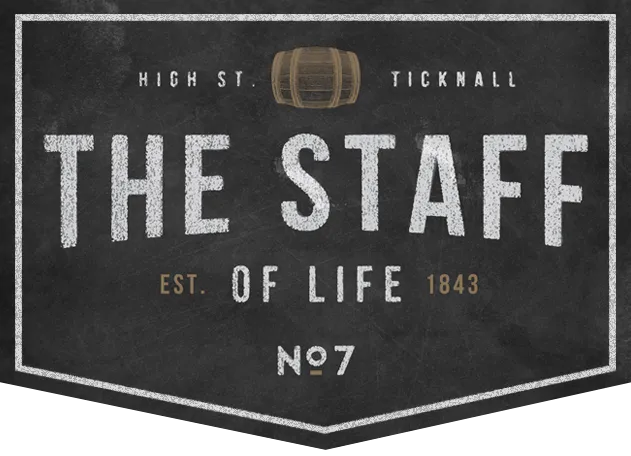ticknall village history
7 High Street, Ticknall,
Derbyshire,
DE73 7JH
learn more about ticknall
Ticknall is a small village situated in Derbyshire, south of the City of Derby. It is among a cluster of small villages such as Melbourne, Calke, Milton and Repton. The village extends nearly 2 miles on the Derby and Ashby roads. It contains 1867 acres of fertile land, approx. 250 houses, 560 adults and is amongst the most picturesque in the area.
The name Ticknall was first recorded around 1002 and again in 1004 in the name of Ticenheale. In the early 11th century it was recorded as Tychenhal and in 1086 as Tichenhalle meaning ‘at the kid nook of land’ as the first settlements must have been located in a small sheltered nook in an area of woodland likely to have been a well watered and fertile glade.
The settlement would have thrived because by 1002 there were already at least 2 separate estates, one belonging to Wulfric Spot who was a great Midland Lord and the other belonged to the Earl of Mercia who was an even greater magnate, only a little less powerful than the crown.
Wulfric later gave his estate to Burton Abbey whom held it to the dissolution of the monasteries over 500 years later. The other estate, later in the 11th century in the reign of Edward the Confessor, belonged to Alfgar, the rebellious Earl of Mercia.
Ticknall was originally a small farming settlement carved out of the woods of the south of the River Trent. By the early 11th century it had at least two landlords and by the mid 11th century, it had three; the Lord of the largest manor became the King. Calke began the early 12th century as a small monastic house founded in the woods by the Earl of Chester to whom the King had given his Manor of Ticknall.
Calke priory had a short lived independent life and in 1172 became merely a cell of its daughter house the Priory of Repton. After the dissolution of the monasteries in the 1530’s their property was confiscated by the crown and sold off.
Harpur of Calke acquired a baronetcy and in 1677 inherited the remaining estates of the senior branch of the family, Harpur of Swarkestone. Following the marriage of Sir John Harpur and Dame Catherine they rebuilt the old cell of Calke around 1700 as a large country house with the extensive outbuildings that we see today which is now owned and run by the National Trust.
Calke
It would be wrong to exclude Calke and its relevance to the history of Ticknall village. The name Calke first appears in the 1130’s meaning chalk or limestone and is so derived due to the carboniferous limestone that outcrops there. Calke has been solely owned by the Harpur family from Henry Harpur’s purchase in 1621.
It was from Calke that he took his title as a baronet. Since the extensive development of the Ticknall lime works, both quarries and kilns provided a very useful extra source of income for the maintenance of Calke Abbey and park.
There had probably been local exploitation of the lime for both building and agricultural purposes, but it was the arrival of cheap bulk transport enabled by horse tramway and canal boat, that allowed the real expansion of the industry.
Village taps / Standpipes
A series of these taps were erected in 1914 on the orders of Sir Vauncey Harpur Crewe to replace the former water well supply. There are several protruding in various parts of the village of which two are still in working order.
They are a visual focus of Ticknall’s geography and are situated lengthways along the bottom of a shallow valley with a base of impervious clay creating the ideal condition for springs. They were rendered obsolete only 40 years ago with the onset of piped water to the houses.
However some villagers do insist that a good cup of tea can only be made with water from the standpipes!
The Roundhouse / Lockup
The lockup was built in 1809 for the overnight accommodation of people arrested in the village before being carted off to Derby. However it became obsolete in 1850.
There are over 200 similar constructions in Britain and nearby ones are visible at Smisby and Breedon on the Hill. All are of a similar design, round without a window, with a conical roof and a heavy door. Ticknall’s was constructed with stone, bricks and lime mortar.
The inventory shows; carriage of lime 2s.6d, to John Asher going twice to Melbourne for stones 10s and to Mr G Hutchinson for Lime 18s.9d.
The entries for 10 and 21 October 1809 also records who undertook the work and how long it took. One was Mr G Orton for work at the round house £1 and John Illsley received a total of 14s for 7d for other building work. The village blacksmith, Henry Minion did the iron work and Mr Dickens did the carpentry. The total costs were £25.19.11.
It building became obsolete in 1850 and was used as a Home Guard arms store during the Second World War and since then for storing road sweeping tools. It is now a Grade 11 Listed building.
The Church
The Church ruins are the remains of the original medieval Church dedicated to St. Thomas-a-Becket and built in the 13th and 14th centuries. The existing church, sited 50 yards north of the old one, is dedicated to St. George and owes its existence to Sir George Crewe of Calke Abbey and built in 1842. There are also remains of a medieval cross presumably the same age as the original Church.
It may have been a market cross for the community connected with another function that ancient village churchyards sometimes performed. The ruins of the original church resisted the best efforts of Victorian contractors in the pay of Sir George Crewe armed with gunpowder in the 1840’s to demolish it after the Church we see today was built.
The old Church was built in an architecture known as Decorated Gothic with elaborate pointed arches. The present Church resulted due to the failure to maintain the old building adequately and the decision not to extend it when the village grew.
The building costs of £4000 were mainly provided by Sir George Crewe in 1842 and the architectural design by Henry Isaac Stevens who also designed many other significant buildings in Derby such as St Alkmund’s Church (now demolished), Bishop Lonsdale College, the Cattle Market and Cemetery Chapel.
The Almshouse
The Almshouses were constructed in 1722 under the will of Charles Harpur for the benefit of the old and poor in the village and thus was described as the ‘hospital’. Building costs amounted to £500. There was room for 7 people, each home consisting of a room on the ground floor, a bedroom above, a large pantry and a garden plot. The homes are situated on Church Lane near to the Church.
A story reported in the ‘Derby Mercury’ newspaper on the 9th January 1867 told the story of the death of an old infirm woman of the name Dymoke who occupied one of these homes. At about half past two, on the morning after Christmas Day screams were heard coming from her sitting room.
A neighbour, more infirm still, crawled to her assistance but found Betty Dymoke in a sheet of fire. She had felt unwell and had arisen to make herself a cup of tea when her clothes took fire. She died about 9 o’clock the same morning and the coroners report showed it to be an ‘accidental death’.
The lime-yards
The lime yards lay in the heart of Ticknall’s history of industry and are located to the far end of the Village almost opposite the Royal Oak service station. The line of the tramway can be seen over the wall on the left here which descends to the level of the garage whose workshop was once the brew house to The Royal Oak public house.
This was one of several inns in the village. Further down on the left is Limekiln House where the tramway crossed the road to enter the limeyards.
The track which runs along side the lime kiln house leads to the brickyard. Here is a scotch kiln still preserved which can be seen today and the collapsed remains of a drying shed.
The pug mill was horse operated and used for grinding the clay and was also situated here. Ticknall bricks were widely used, not only in Ticknall and Calke but in many other Harpur Crewe estates. They are often marked ‘I.H.C’ for Sir John Harpur Crewe.
The School
The school, situated next to the Church, was built in 1824 by Sir George Crewe to replace an earlier structure endowed by Dame Catherine Harpur in 1724 for village children of Ticknall.
In 1986 it was closed by Derbyshire County Council owing to lack of numbers. However due to great parental support it was re-opened in 1987 as an independent non-fee paying school for children aged four to eleven.
Today the school thrives and enjoys a good reputation. Money is raised by parental and trust contributors, a Government Capitation Grant and profits from the Catherine Wheel Gift Shop at Staunton Harold run by the parents.
Methodist Church
The Methodist church was built in 1815. Its front roof line shows a similar architectural period to the Almshouses. Inside are 5 columns supporting a gallery which cost £13.15s.0d from Burton.
Extensive repairs including re-roofing were carried out over 20 years ago. The first Ticknall Methodist Society dated from 1762 when Sir Harry Harpur brought his Methodist bride Lady Frances.
The Methodist Chapel is older than the Parish Church. Also older is the Baptist Chapel, located just off Main Street.
Great Walks
Many walks in and around town
Pub
Enjoy our cozy pub
Explore Ticknall
Discover the town of Ticknall
Mountain Biking
MTB trails for avid riders & families
Motorcycle Rides
Discover the countryside on 2 wheels
Nearby Attractions
Explore the nearby attractions





